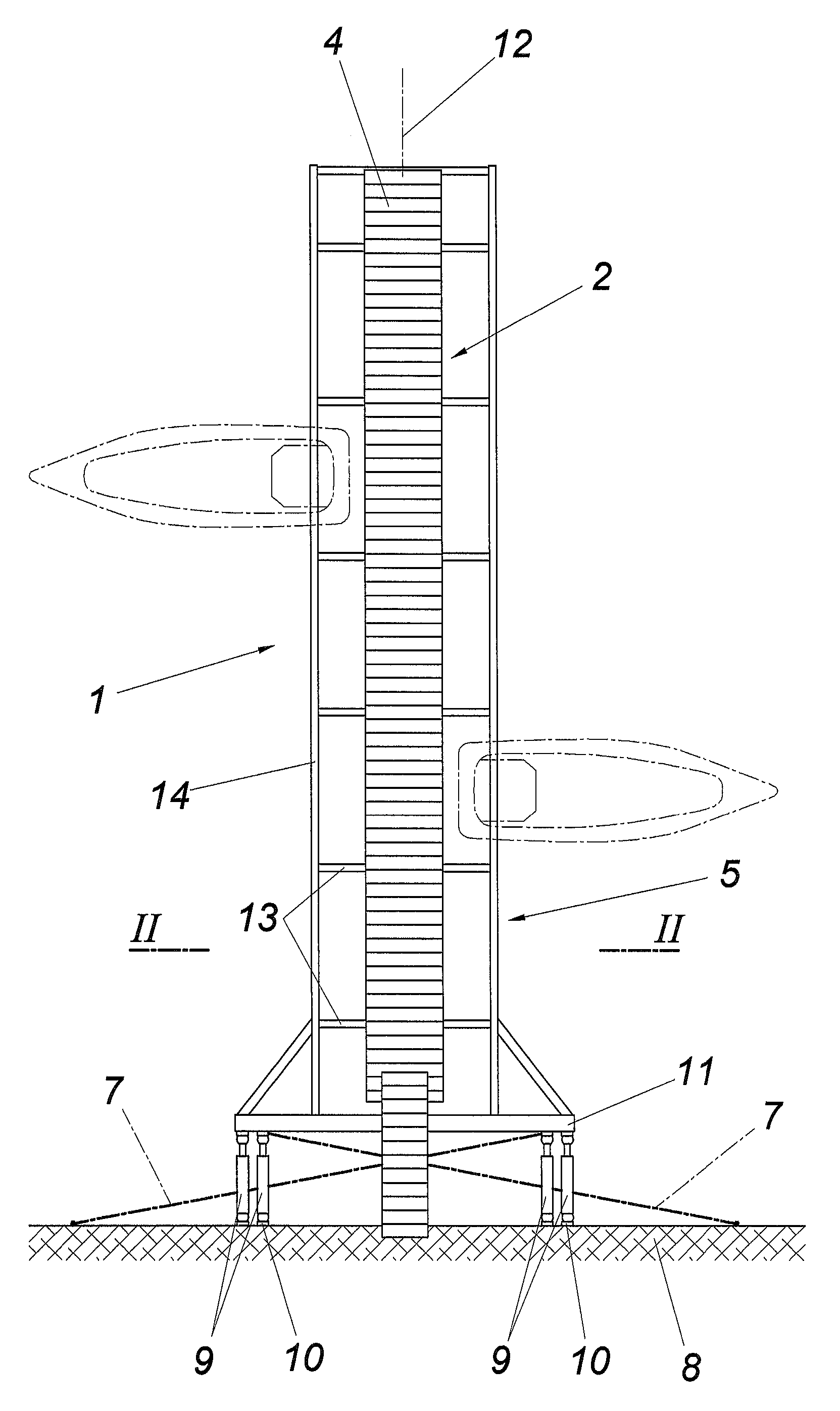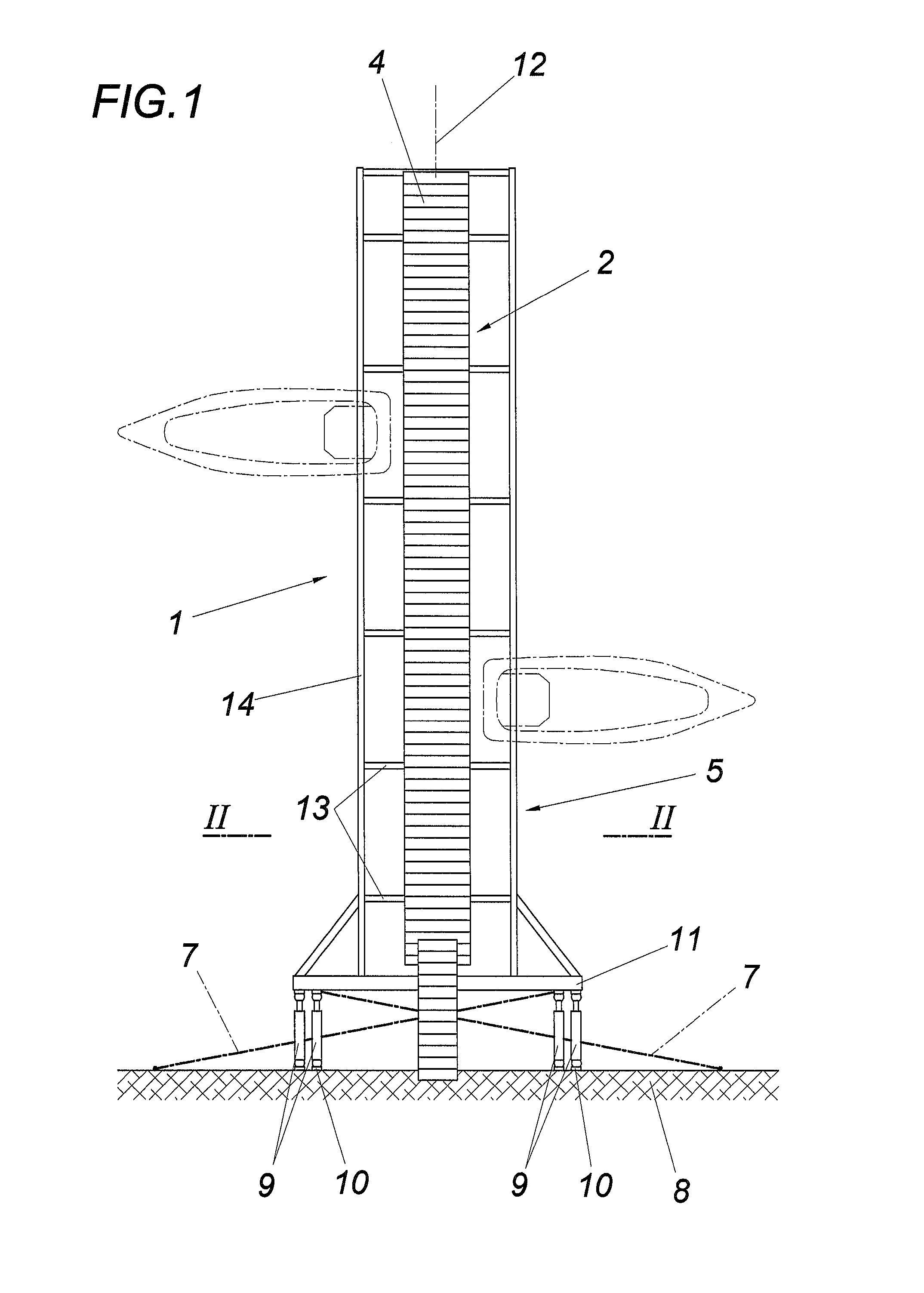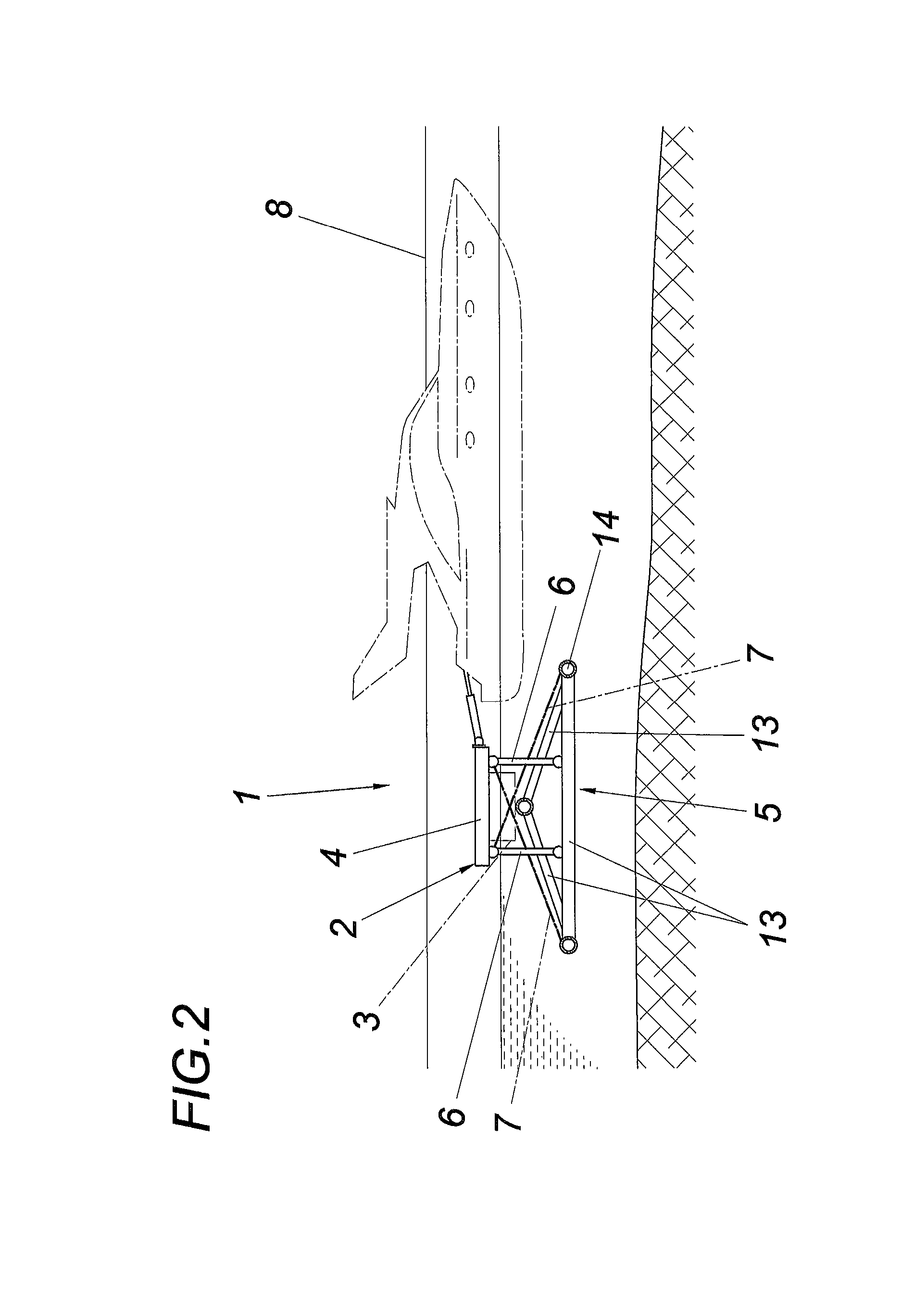Device for securing floating bodies
a floating body and body technology, applied in the direction of mooring equipment, pontoons, dry-docking, etc., can solve the problems of substantial damping of movements and inability to compensate, and achieve the effect of reducing buoyant forces
- Summary
- Abstract
- Description
- Claims
- Application Information
AI Technical Summary
Benefits of technology
Problems solved by technology
Method used
Image
Examples
Embodiment Construction
[0022]The device according to the invention for securing floating bodies 1 comprises a floating dock 2 having at least one buoyant element 3, having a path structure 4, and having a framework-like underwater structure 5.
[0023]The path structure 4 has a typical floor covering made of wooden boards or the like and is connected to the framework-like underwater structure 5 of the floating dock 2 via pendulum supports 6 and braced via traction means 7.
[0024]The floating dock 2 is fixed on a landing body 8, a pier, harbor wall, or the like, using at least two holding trees 9, which each engage at one end on the floating dock 2 and at the other end on the landing body 8. The holding trees 9, which are fixed in particular by means of fittings, particularly preferably ball couplings, on the mooring points 10, consist of two subtrees displaceable one inside the other telescopically, which are braced against one another by a spring unit, which absorbs traction and compression forces acting on ...
PUM
 Login to View More
Login to View More Abstract
Description
Claims
Application Information
 Login to View More
Login to View More - R&D
- Intellectual Property
- Life Sciences
- Materials
- Tech Scout
- Unparalleled Data Quality
- Higher Quality Content
- 60% Fewer Hallucinations
Browse by: Latest US Patents, China's latest patents, Technical Efficacy Thesaurus, Application Domain, Technology Topic, Popular Technical Reports.
© 2025 PatSnap. All rights reserved.Legal|Privacy policy|Modern Slavery Act Transparency Statement|Sitemap|About US| Contact US: help@patsnap.com



